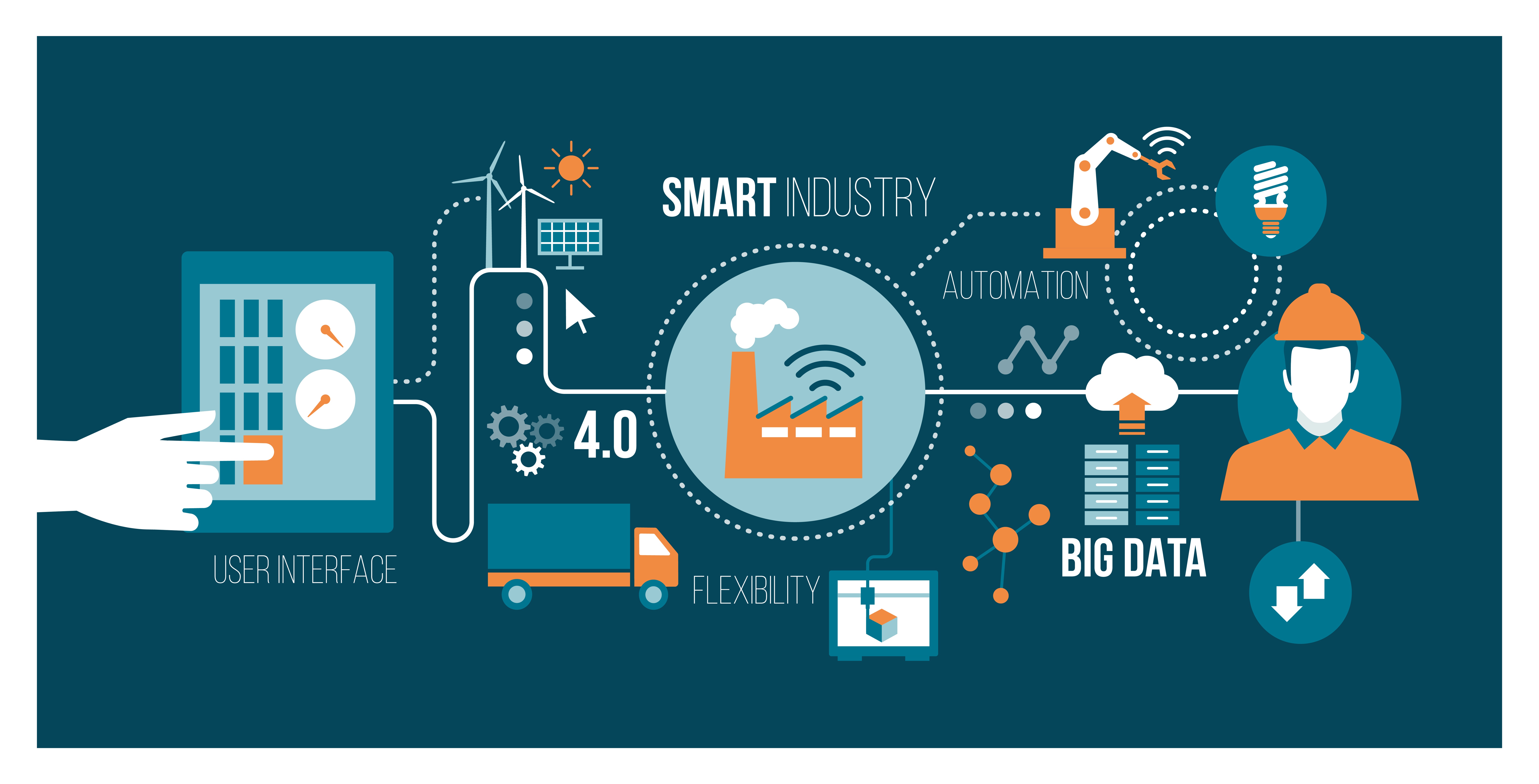
This blog post was written by Ruben Vuylsteke & Christophe Bonduelle.
Smart Manufacturing, Industry 4.0, IoT, etc. are hot topics in our environment. To learn more, we visited the ABISS (Advanced Business & Industrial Software Summit) trade fair held on Thursday 5 October at the XPO in Kortrijk. Throughout the day, the questions at the back of our minds were: “What can AE signify for these companies?” and “What does AE still have to learn to become relevant to these companies?” Finding answers to these questions requires further thought but before that, here is our report of this extremely interesting day!
What is Industry 4.0 precisely?
A picture says more than a thousand words: this is the fourth industrial revolution, where everything is real-time, integrated and connected.
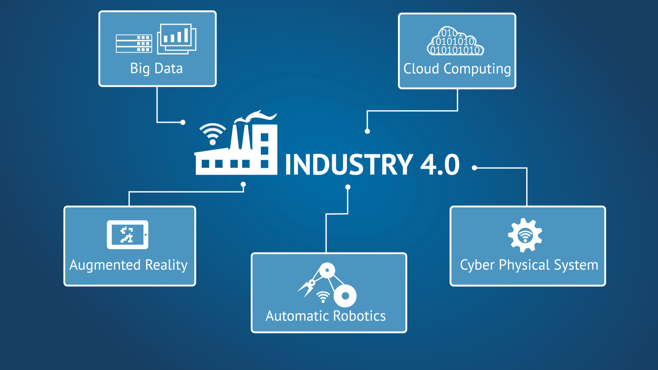
Reducing costs rather than enhancing customer experience
Compared to our customers who are active in services, the manufacturing companies present at the trade fair were concerned about other issues. Terms such as ‘Customer Experience’ and ‘Customer Journey’ were not mentioned at all. Instead, the focus was on cost efficiency. Availability, performance and quality are, for example, the factors that determine Overall Equipment Effectiveness (OEE):
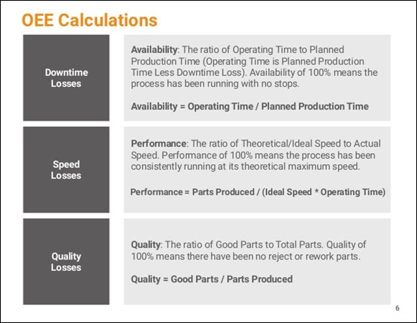
A different IT (or OT?!) landscape than what we’re used to with our customers
This won’t come as a surprise to our AE colleagues who have previously worked in manufacturing companies, but an important area in which we are actively acquiring and consolidating knowledge within AE is the typical technology landscape at a manufacturing company. The lower we go in the figure below, the closer we get to the actual production process:
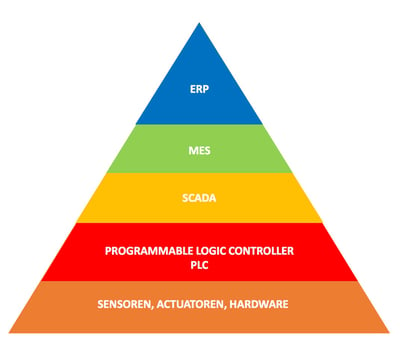
- ERP (Entreprise Resource Planning): Our trusted terrain
- MES (Manufacturing Execution System): manages and monitors the work taking place on the production floor. Maintains all production information in real-time and receives data on a minute-by-minute basis from robots, employees and machine monitors.
- SCADA (Supervisory Control and Data Acquisition): visualises what takes place on the production floor and assists with the collection and storage of data. A typical SCADA user is a machine operator and this is why, as one of the exhibitors informed us, there is a greater focus on UX: the screens must be easy to understand and operate.
- PLC (Programmable Logic Controller): a microprocessor that manages a number of outputs based on information received via its inputs. This is used for automating machines or production lines.
- Sensors, actuators, hardware: most tangible on the production floor
There is an important distinction between IT (Information Technology) versus OT (Operational Technology). ERP is regarded as IT while all layers below it, as OT. In some organisations, these are two different departments.
A typical phenomenon in manufacturing companies is that vast amounts of interesting data remain locked in the OT layer, while these data could be transformed into valuable information for IT systems. The Internet of Things can provide a solution for this.
Analytics for savings
There are definite opportunities for applying analytics and information management. Here, the focus lies not so much on customer segmentation and customer retention, but on data mining techniques that provide insight into ways to save costs. The reduction of energy consumption was a frequently discussed theme.
The quality of the data about the production process is possibly higher than that of the data we often use for service companies, because of the stringent nature of a manufacturing process compared to, for example, a customer onboarding process within a bank/telecom/utilities player :). We heard an exhibitor mention an investment of EUR 80,000 in analytics that had generated a return of EUR 500,000. That’s a great business case!
Another real example of this in a multi-billion-euro business is the research to identify the ideal conditions (water quality, temperature, antibiotics, food, etc.) for farming as large-sized salmon as possible.
IoT
Everybody had the slogans: ‘IIoT’ (Industrial IoT) and ‘Smart Factory’ displayed on their exhibition stand backdrops: within the industry, the use of sensors for performing control and measurements is a common practice for much longer -> lean principles within manufacturing have been common themes for a long time now. But many companies are not completely successful in digitising all their processes - a lot is still being done on paper! Moreover, the processing or analysis of this massive amount of sensor data is not part of the day-to-day activities of the production manager.
As mentioned earlier in the section about the IT/OT landscape: IoT can ensure that valuable data, which normally remain locked on the production floor, can be pulled upwards. Examples of applications: predictive maintenance, remote process monitoring, etc.
Edge processing is an application for which many exhibitors have developed devices, with the purpose of executing the computing logic and process control on a remote environment. All sensor data do not need to be taken to the cloud/central processing system, but can be interpreted on small devices closer to the machine and the necessary actions can be performed on-site. Only the essential data for reporting or further analysis will be stored in the central system. We came across a company that displayed an IoT device which it can place next to a machine, to which sensors can be connected and which can send information via VPN to the IT layer. Along with this, such companies provide dashboarding/monitoring tools for visualising IoT data.
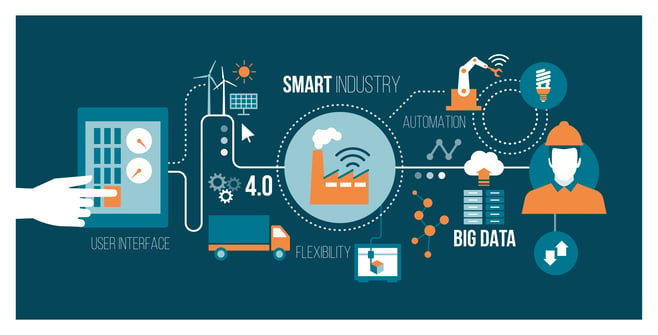
VR and AR
Virtual Reality is gaining in importance. A typical example is the training of workers for tasks involving a complex sequence of steps (complex assembly or maintenance of installations such as incinerators or turbines).
Other possibilities are more focused on customer interaction and sales (there is an app to visualise a Willy Naessens swimming pool in your garden), HR (e.g. to see, as a potential employee, what you will be doing on a daily basis), machine building (to know which parts need to be installed, and when), etc.
Augmented Reality can be used for steering crucial actions, such as the tightening of a critical bolt in an aeroplane, and feeding back the resulting measurements to a database (in the IT layer) to ensure maximum traceability and quality assurance.
There is a research group at the University College West Flanders (Howest) which is very active in this world of augmented reality (and world-renowned as well).
The Flemish government also supports initiatives in this domain in which companies collaborate with Howest: https://www.sivar.be/
Furthermore, the Sirris innovation centre and the M&M (Machine Building & Mechatronics) competence centre are very active in supporting companies and bringing innovation to them: http://www.pomwvl.be/machinebouw-mechatronicacentrum.
Next steps
As you can see: lots of challenges, just the way we like it! But nevertheless, we do feel that there is a link with AE’s current core competences. We continue to accumulate knowledge about the trends in the manufacturing business, but it's clear that we can absolutely benefit from each other.
Did you like our recap from the ABISS (Advanced Business & Industrial Software Summit) trade fair? How do you think your company can benefit from industry 4.0? Please let us know in the comments below, or share the article with your colleagues!



